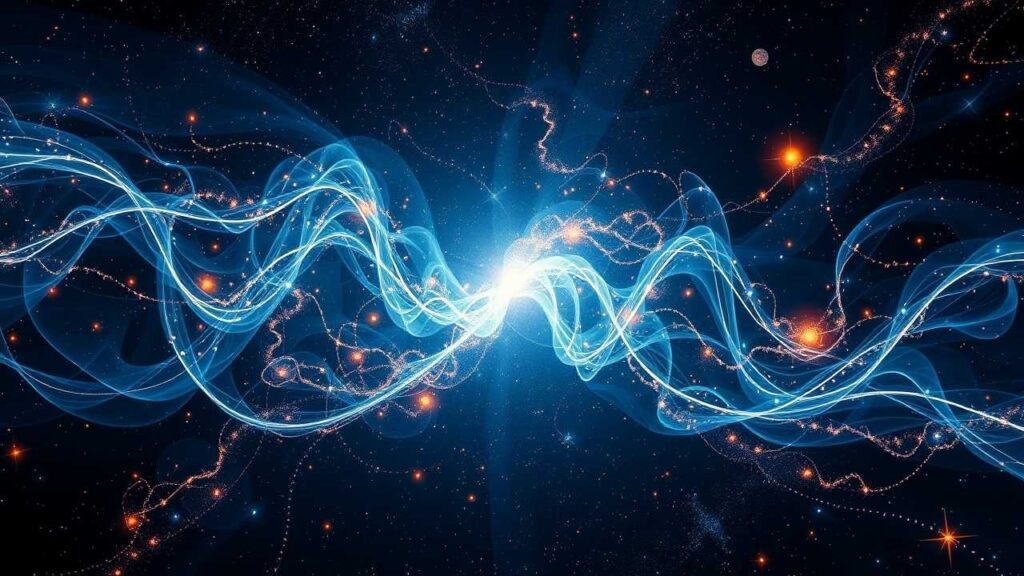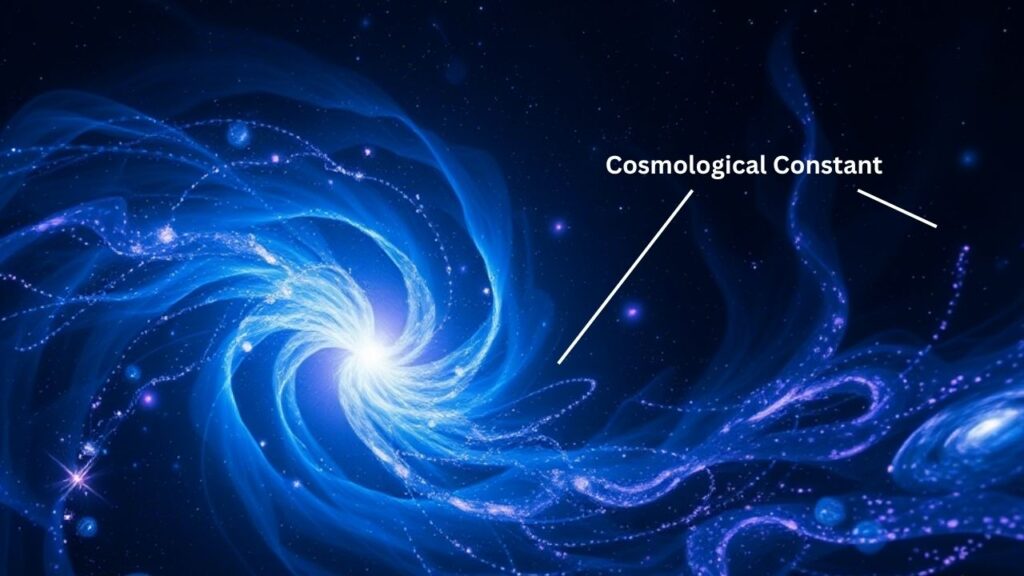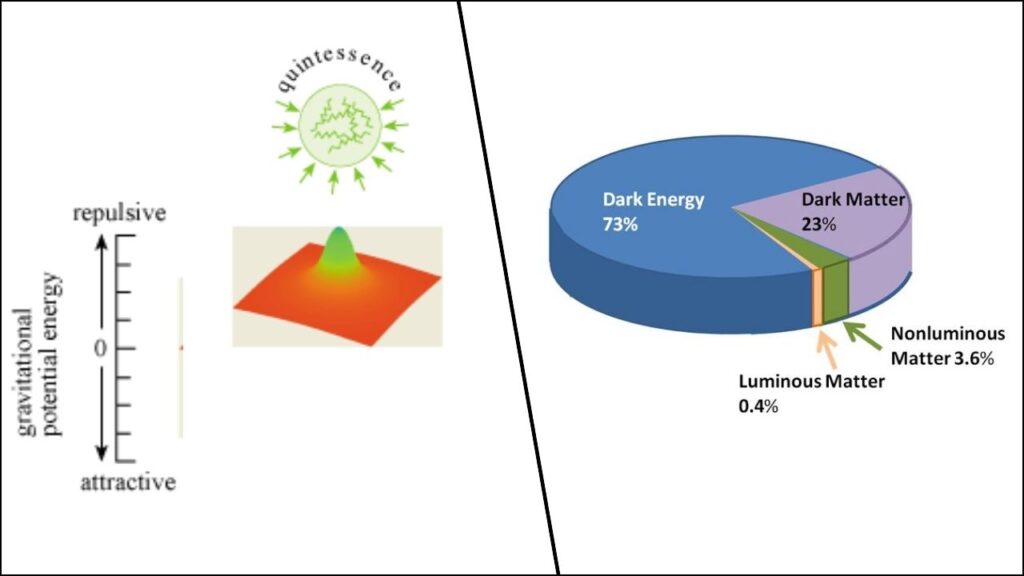The universe is a vast, mysterious place, and every year, scientists uncover new clues that challenge what we think we know. One of the most exciting ideas gaining attention is that the universe may follow hidden energy patterns beyond known physics. This means there could be forces, particles, or entire realms of reality that we have yet to discover—ideas that could change the way we understand everything from stars and galaxies to the tiniest building blocks of matter.

For decades, scientists have relied on the Standard Model of particle physics, a set of rules that explains how most of the universe’s known particles and forces interact. But as powerful new experiments collect more data, researchers are seeing hints of strange energy patterns that don’t fit the Standard Model. These discoveries are opening up new possibilities for science, technology, and our understanding of the cosmos.
Experts Say the Universe May Follow Hidden Energy Patterns Beyond Known Physics
| Topic | Key Data & Insights | Professional Impact |
|---|---|---|
| Hidden Energy Patterns | Large-scale detectors like CERN’s LHC find “soft unclustered energy patterns” not explained by Standard Model | Opens new research in particle physics, cosmology, and advanced data analysis |
| Evolving Dark Energy | DESI data shows dark energy may be weakening over time, not constant as previously thought | May require updating cosmological models and theories on universe’s fate |
| AI in Cosmology | AI tools reveal hidden patterns and improve precision in cosmic measurements | Enhances data analysis, offers new career paths in computational astrophysics |
| Hidden Valley Theories | Theories predict unknown “dark sector” particles may interact via hidden energy patterns | Drives theoretical and experimental research beyond the Standard Model |
| Quintessence Field | Models suggest dark energy might be dynamic, not static, possibly linked to a new “fifth force” | Unifies cosmology with advanced physics and opens new theoretical directions |
The universe is far more mysterious and fascinating than we ever imagined. Experts say the universe may follow hidden energy patterns beyond known physics, suggesting there are forces, particles, and realms we have yet to discover. Thanks to powerful experiments, advanced AI, and the creativity of scientists worldwide, we are on the edge of a new era in understanding the cosmos. Whether you’re a student, a professional, or simply curious, now is a thrilling time to learn about these cosmic mysteries and be part of the next great scientific adventure.
What Are Hidden Energy Patterns?
The Standard Model: Our Current Rulebook
The Standard Model is like the universe’s instruction manual for the tiniest pieces of matter. It describes particles such as electrons, quarks, and neutrinos, and explains three of the four fundamental forces: electromagnetic, weak, and strong nuclear forces. These rules have helped scientists predict and discover many particles, including the famous Higgs boson.
But the Standard Model has limits. It doesn’t explain gravity, dark matter, or dark energy. It also can’t account for why the universe is made mostly of matter, not antimatter, or why the universe is expanding faster and faster.
Discovering Soft Unclustered Energy Patterns
At the world’s most advanced laboratories, such as CERN’s Large Hadron Collider (LHC), scientists smash particles together and study the resulting showers of energy. In recent years, they have started noticing soft unclustered energy patterns—faint signals that don’t fit the usual categories of particle interactions.
Unlike the sharp, well-defined patterns expected from known particles, these soft patterns are spread out and subtle. They might be caused by unknown particles or forces that interact very weakly with ordinary matter. Some scientists believe these patterns could be the fingerprints of a Hidden Valley—a theoretical world of particles that exist alongside our own, but are almost invisible to us.
Why Are These Patterns Important?
- They challenge the Standard Model: If confirmed, these patterns suggest there are new particles or forces that the Standard Model doesn’t account for.
- They may help explain dark matter: Dark matter makes up about 27% of the universe, but we have never seen it directly. Hidden energy patterns could be a sign of dark matter particles.
- They open new fields of research: Understanding these patterns could lead to new discoveries in physics, technology, and even medicine.
The Mystery of Dark Energy
What Is Dark Energy?
Dark energy is one of the greatest mysteries in science. It is a form of energy that makes up about 68% of the universe and is responsible for the universe’s accelerated expansion. Imagine blowing up a balloon and watching it inflate faster and faster—the force making that happen in the universe is dark energy.

For many years, scientists thought dark energy was a constant force, known as the cosmological constant. This idea fit the data from earlier observations, but new, more precise measurements are revealing a more complicated picture.
Is Dark Energy Changing Over Time?
Recent observations from the Dark Energy Spectroscopic Instrument (DESI) have given scientists the most detailed map of the universe ever created. By measuring the light from millions of galaxies, DESI can track how the universe has expanded over billions of years.
Surprisingly, some of this data suggests that dark energy might not be constant after all. Instead, it could be weakening over time. If true, this would be a revolutionary discovery, forcing scientists to rethink the fate of the universe and the laws of physics themselves.
The Quintessence Field: A New Idea
To explain a changing dark energy, some researchers propose the idea of quintessence. Unlike a constant cosmological constant, quintessence is a dynamic field that changes in strength as the universe evolves. This could mean that dark energy is more like a weather system than a fixed background force—sometimes stronger, sometimes weaker.

What Does This Mean for the Universe?
- The fate of the universe could change: If dark energy weakens, the universe’s expansion might slow down, stop, or even reverse after billions of years.
- New physics may be needed: A dynamic dark energy field could point to a new, undiscovered force of nature—a “fifth force” beyond gravity, electromagnetism, and the nuclear forces.
- Cosmological models must be updated: Scientists will need to revise their models of the universe’s history and future.
How Artificial Intelligence Is Transforming Cosmology
The Data Explosion in Astronomy
Modern telescopes and particle detectors collect enormous amounts of data—far more than any human could analyze alone. To make sense of these vast datasets, scientists are turning to artificial intelligence (AI) and machine learning.
AI can find patterns and connections in the data that would be impossible to spot by hand. For example, AI tools can analyze the shapes and positions of millions of galaxies to uncover subtle clues about dark energy, dark matter, and hidden energy patterns.
Real-World Impact of AI in Space Science
- Sharper measurements: AI improves the precision of cosmic measurements, helping scientists resolve disagreements about the universe’s expansion rate.
- Faster discoveries: Automated analysis means new phenomena can be found more quickly.
- New career opportunities: Skills in data science, machine learning, and computational physics are increasingly valuable in astronomy and related fields.
Theories Beyond the Standard Model
Hidden Valley and Dark Sector Theories
Physicists have long suspected that the Standard Model is only part of the story. Hidden Valley and dark sector theories propose that there are entire families of particles and forces that interact very weakly with ordinary matter. These hidden realms could explain both dark matter and the mysterious energy patterns observed in experiments.
- Hidden Valley: Suggests a parallel world of particles, possibly connected to our own through rare or subtle interactions.
- Dark sector: Refers to particles and forces that do not interact with light, making them invisible to traditional detectors.
Supersymmetry and Extra Dimensions
Other advanced theories, like supersymmetry and string theory, predict the existence of new particles and even extra dimensions of space. While these ideas are still unproven, they offer possible explanations for the hidden energy patterns seen in experiments.
- Supersymmetry: Proposes that every known particle has a heavier “superpartner” that could be part of the dark sector.
- Extra dimensions: Suggest that our universe may have more than three dimensions of space, with hidden energy patterns leaking between them.
A Step-by-Step Guide to Understanding Hidden Energy Patterns
1. Build a Foundation in Physics
- Learn about the Standard Model and its successes and limitations.
- Study the four fundamental forces: gravity, electromagnetism, weak, and strong nuclear forces.
2. Explore the Unknowns
- Read about dark matter and dark energy—what they are, how we detect them, and why they matter.
- Follow updates from major experiments like the LHC and DESI.
3. Dive Into New Theories
- Investigate concepts like the Hidden Valley, quintessence, and supersymmetry.
- Understand how these ideas might explain the universe’s hidden energy patterns.
4. Embrace Technology
- Learn data science and AI skills to analyze large scientific datasets.
- Participate in online courses, workshops, or citizen science projects related to astronomy and physics.
5. Stay Curious and Collaborative
- Ask questions: Why do some energy patterns not fit our current models? What could a new force mean for science?
- Work with others: Many breakthroughs come from teamwork and sharing ideas across disciplines.
Physicists Discover a New Method to Measure Neutrinos, the Universe’s Most Elusive Particles
Superconducting Magnets Detect Gravitational Waves—A New Way to Observe the Universe
How the Universe’s Basic Building Blocks Exploded Into Existence, According to a Physicist
FAQs About Experts Say the Universe May Follow Hidden Energy Patterns Beyond Known Physics
Q: What are hidden energy patterns in the universe?
A: Hidden energy patterns are unusual signals detected in scientific experiments that don’t fit the expected behavior of known particles. They may be clues to new particles, forces, or realms of the universe.
Q: Why is dark energy important?
A: Dark energy makes up most of the universe and controls its expansion. Understanding it is crucial for predicting the universe’s future and unlocking new physics.
Q: How do scientists detect these patterns?
A: Using advanced detectors at particle colliders and telescopes, and analyzing the data with powerful computers and AI.
Q: What is the Hidden Valley theory?
A: It’s the idea that there is a parallel world of particles that interact very weakly with ordinary matter, possibly explaining dark matter and hidden energy patterns.
Q: Could these discoveries change physics?
A: Yes. If confirmed, they could lead to new theories, new forces, and a deeper understanding of the universe.






